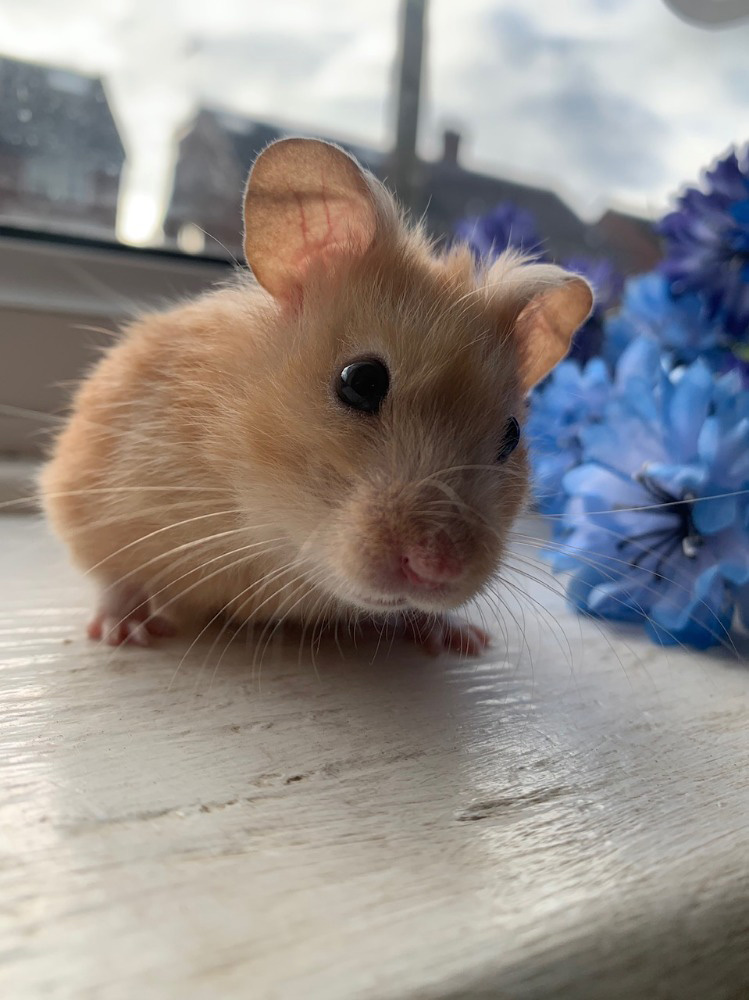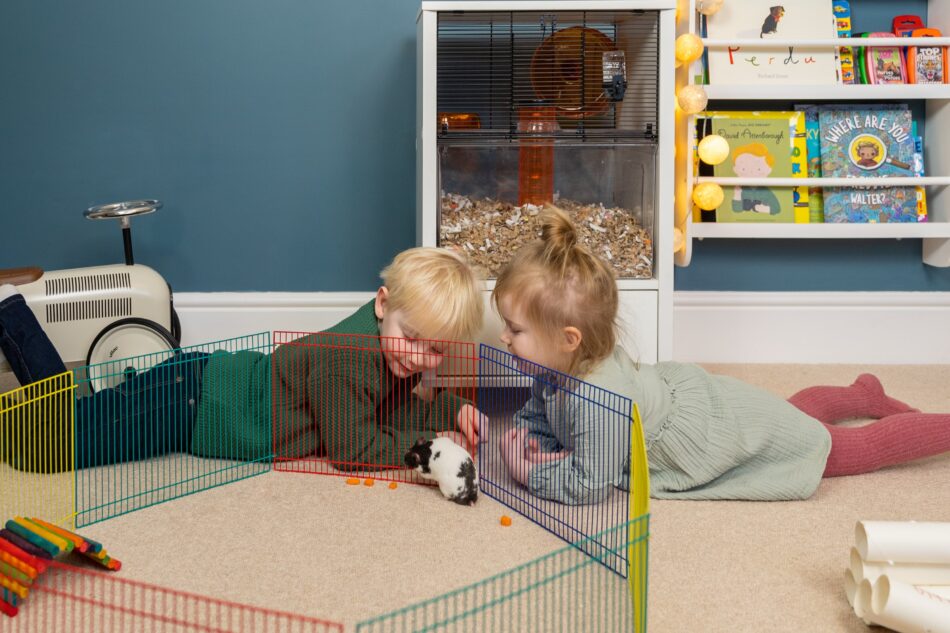Best Hamster Breeds for Teaching Children
Hamsters are delightful small pets that can be perfect introductory animals for children, helping them learn about responsibility and compassion. When choosing a hamster breed to teach your children, it’s important to consider their temperament, size, and care requirements. In this article, we’ll explore the best hamster breeds for kids and what makes each one unique and suitable for young pet owners.
Choosing the Right Hamster Breed
Before diving into specific breeds, it’s essential to understand why breed selection matters. Different hamster breeds have various temperaments and care needs, which can significantly influence a child’s experience with pet ownership.
Syrian Hamsters

Syrian hamsters, also known as golden hamsters, are often recommended for families with children. They are larger than dwarf breeds, which makes them easier to handle. Syrian hamsters are generally solitary and can display calm and friendly behavior when socialized appropriately. Their gentle nature allows children to interact and play with them safely. To foster a bond, encourage your child to spend time with the hamster daily, using treats to make interactions positive.
Dwarf Campbell Hamsters

Dwarf Campbell hamsters are charming and small, making them another excellent option for children. These social little creatures enjoy the company of other hamsters, which can provide kids with the joy of seeing their pets interact. Though they may be a bit more nippy than larger breeds, with proper handling, they can become affectionate. Educating your child on gentle handling techniques will help ensure a positive experience with Dwarf Campbell hamsters.
Important Care Considerations
While hamsters can be relatively low-maintenance pets, they still require proper care to thrive. Educating children on how to care for their pet is an excellent way to teach responsibility. Let’s break down some key aspects of hamster care.
Habitat Setup
Creating the right environment is crucial. Hamsters need a spacious and clean habitat. For Syrian hamsters, a cage of at least 24” x 12” x 12” is recommended, while dwarf varieties can do well in slightly smaller enclosures. Ensure the cage has adequate bedding, food, toys, and a place for burrowing. Teaching children how to set up and maintain the hamster’s habitat can be a practical and fun learning experience.
Feeding and Nutrition
Understanding a hamster’s dietary needs is another essential part of care. A balanced diet typically consists of a high-quality hamster pellet as the main component, supplemented with fresh vegetables and occasional treats like fruits or nuts. Children can help by measuring food portions and learning about what foods are safe for their pet. This offers a hands-on way to learn the importance of good nutrition.
Engaging Activities with Hamsters
Having a hamster as a pet can be an enriching experience for children, especially when engaging in fun activities that promote a stronger bond. These activities can also teach important lessons about animal care and respect.
Creating a Hamster Obstacle Course

Children can take an active role in their hamster’s playtime by creating a safe obstacle course. Using cardboard tubes, tunnels, and toys, kids can develop creative setups while guiding their hamster through the challenges. This not only stimulates the hamster physically but also provides children with an exciting project that enhances their observational and planning skills.
Learning to Train Their Hamster
Training a hamster can be an enjoyable experience that teaches children patience and commitment. Start with simple tricks, such as teaching the hamster to run through a hoop or to come on command. Utilize snacks as positive reinforcement, allowing kids to witness how rewarding and effective training can be. Each successful trick can boost your child’s confidence and understanding of animal behavior.
Recognizing Signs of a Happy Hamster
It’s important for children to learn how to recognize a happy and healthy hamster. Understanding hamster behavior signals good health and well-being is essential, especially when fostering a caring relationship.
Positive Hamster Behavior
A happy hamster will exhibit playful characteristics such as climbing, exploring, and even “talking” through soft squeaks. Encourage your child to observe their hamster closely; noticing specific behaviors, like running on a wheel or interacting with toys, can help children become more aware of their pet’s needs. This will enhance the bond between them and ensure their hamster’s happiness.
Signs of Stress or Illness
In contrast, your children should also be educated on the signs of stress or illness in hamsters. Look for behaviors such as lethargy, excessive grooming, or hiding. Teaching your child to keep a close eye on how their hamster behaves will empower them to act quickly if they notice any concerning changes. This promotion of awareness builds responsibility and empathy toward pets.
Conclusion
Choosing the right hamster breed can enrich a child’s life, teaching them valuable lessons about love and responsibility. Syrian and Dwarf Campbell hamsters stand out as excellent breeds for kids, offering engaging interactions and opportunities for learning. By nurturing an understanding of hamster care, behavior, and needs, children can build lasting bonds with their furry friends while developing important life skills.
FAQ
1. What is the lifespan of common hamster breeds?
Typically, hamsters have a lifespan of about 2-3 years. Syrian hamsters may live slightly longer, while dwarf varieties often have similar lifespans. It’s important for children to know that pet care requires a commitment, even if the time together may be limited.
2. Are hamsters good for kids with allergies?
Some families may find hamsters suitable for children with mild allergies, as they generally do not have strong dander. However, it’s wise to consult with an allergist before bringing any pet home. Observing allergic reactions over time is important, as each child’s sensitivity can vary.
3. How often should a hamster’s cage be cleaned?
Cleaning a hamster’s cage should be done weekly, with spot cleaning as needed in between. Children can help with this task, teaching them about maintaining a clean andhealthy living environment for their pet.
4. Do hamsters require special medical care?
While routine vet visits may not be necessary, being aware of a hamster’s health signs is essential. Children should be taught to recognize signs of illness and that a vet specialized in small animals can address beyond regular check-ups.
5. Can hamsters live together in the same cage?
Syrian hamsters are solitary and should be kept alone to avoid fighting, while dwarf hamsters can sometimes live together if they are introduced properly. Teaching children about the social needs of different hamster breeds adds another layer to their understanding of pet care.
6. What kind of bedding is best for hamsters?
Safe bedding options include aspen shavings, carefresh, or paper-based materials. Avoid cedar or pine shavings, as they can be harmful. Engaging children in choosing suitable bedding can teach them about safety and care considerations for hamsters.
7. How can we ensure our hamster gets enough exercise?
Providing a wheel, toys, and playtime outside the cage (in a secure area) is essential for your hamster’s exercise. Guide children to observe how their hamster enjoys these activities, ensuring engagements well with pet wellbeing.
